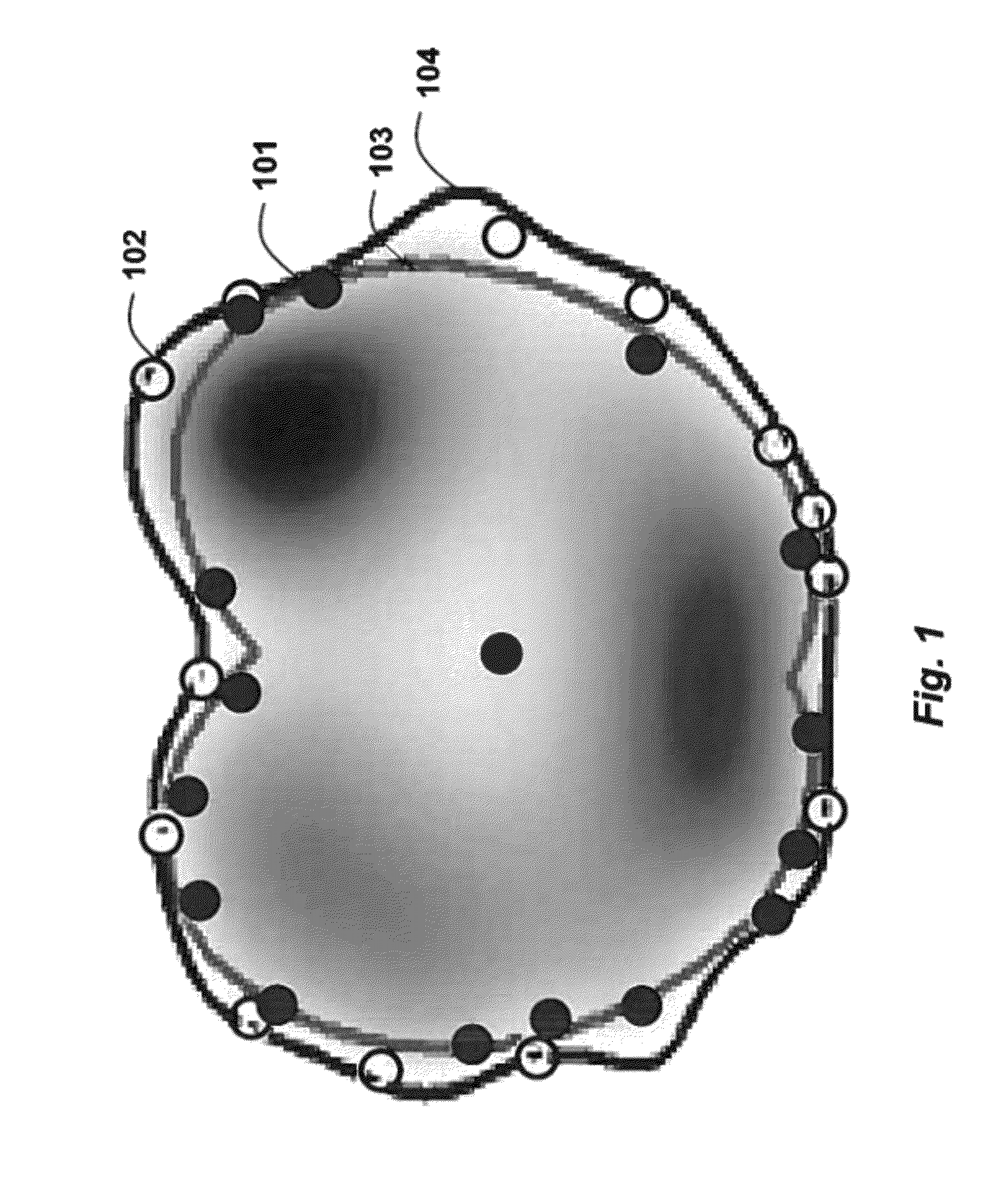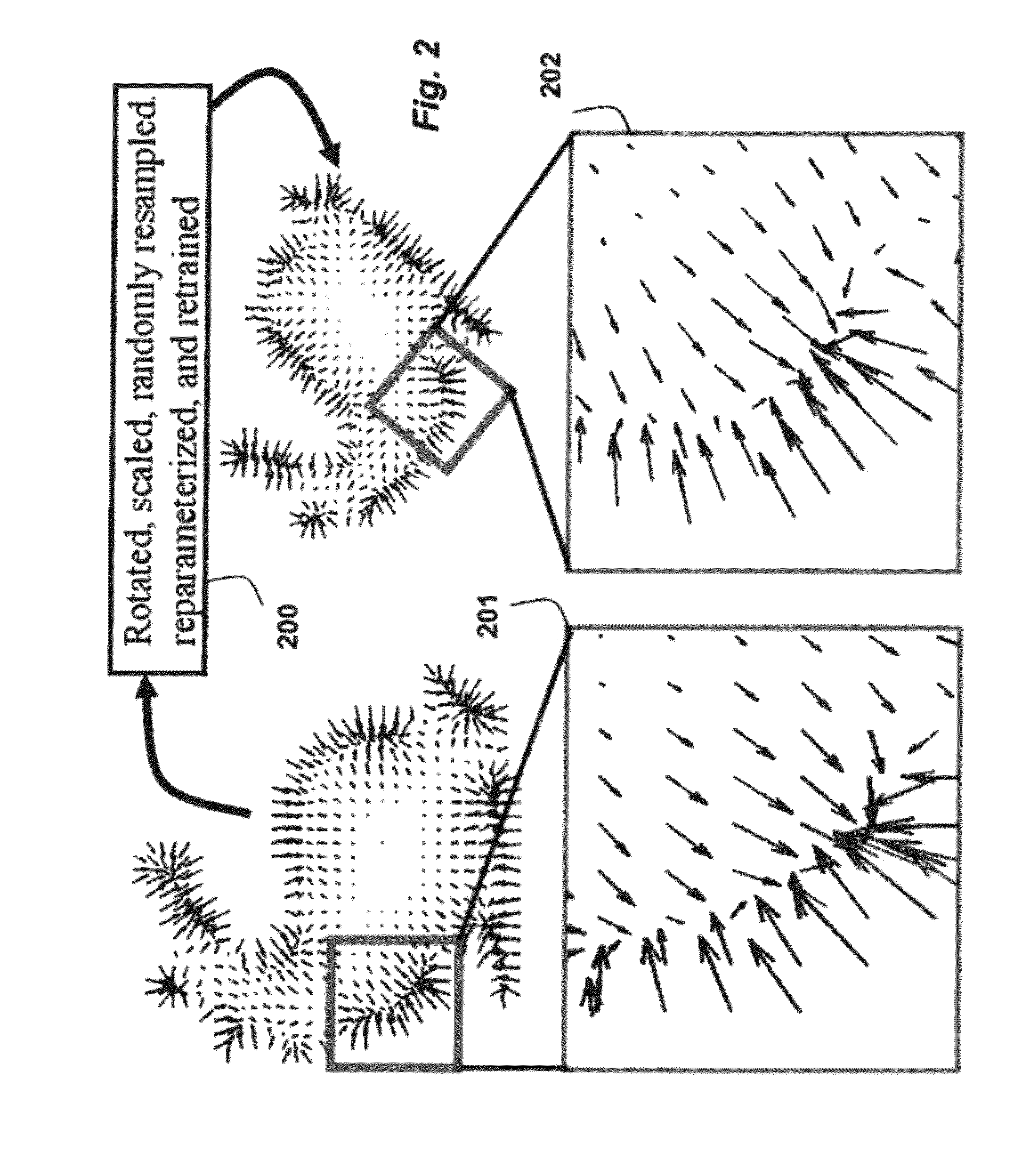Representing object shapes using radial basis function support vector machine classification
a technology of support vector machine and object shape, applied in machine learning, instruments, kernel methods, etc., can solve the problems of occlusion sensitivity, occlusion of articulation and sensitivity, and inability to achieve consistent partitioning, etc., and achieve the effect of easy extension
- Summary
- Abstract
- Description
- Claims
- Application Information
AI Technical Summary
Benefits of technology
Problems solved by technology
Method used
Image
Examples
Embodiment Construction
[0041]Support Vector Shape Representation
[0042]We define a SVS representation of a shape of an object on a decision function of a classifier. As defined herein, the decision function is rule according to which statistical decisions are made on the basis of observations obtained. This representation includes of two parts: feature points that indicate salient components of the shape, and local descriptors of the features that characterize these salient components in terms of statistics of the decision function.
[0043]We are the first to consider the shape representation as a classification problem. This classifier based representation offer several advantages.
[0044]Firstly, it is general enough to be applied to 2D shapes and 3D volumes, and even higher dimensional objects.
[0045]Secondly, the classification function depends only on a sparse subset of key points, which makes the representation robust against noise, missing data, and other artifacts including interior fragmentations. In a...
PUM
 Login to View More
Login to View More Abstract
Description
Claims
Application Information
 Login to View More
Login to View More - R&D
- Intellectual Property
- Life Sciences
- Materials
- Tech Scout
- Unparalleled Data Quality
- Higher Quality Content
- 60% Fewer Hallucinations
Browse by: Latest US Patents, China's latest patents, Technical Efficacy Thesaurus, Application Domain, Technology Topic, Popular Technical Reports.
© 2025 PatSnap. All rights reserved.Legal|Privacy policy|Modern Slavery Act Transparency Statement|Sitemap|About US| Contact US: help@patsnap.com



